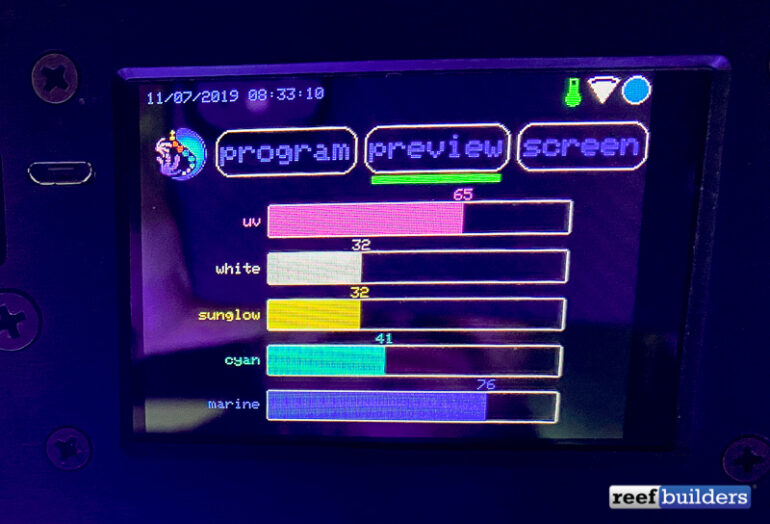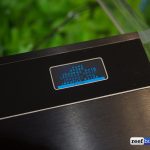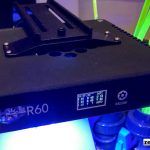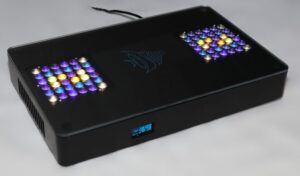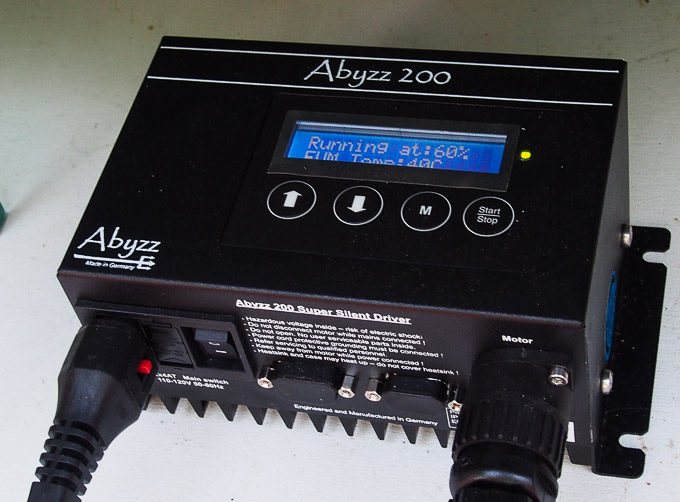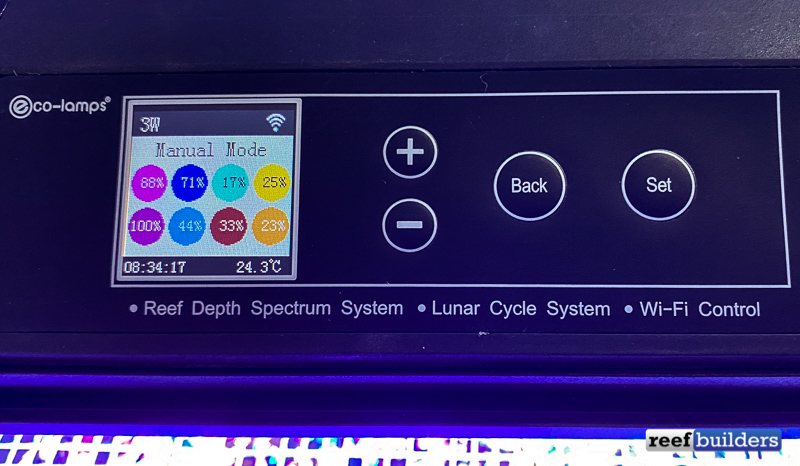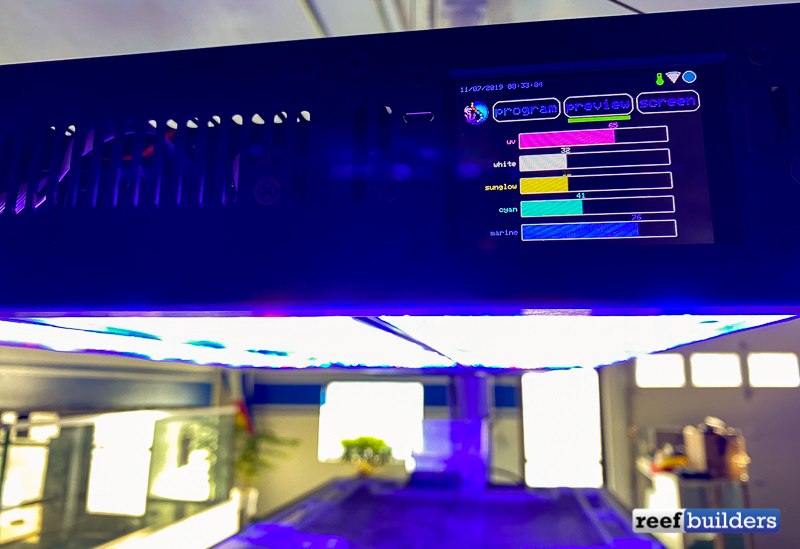Built-in Displays in reef aquarium gear is one of those small design features that always grabs our attention when evaluating new tech. It obviously doesn’t make sense to include displays in everything but in cases where there is a lot of programming or control involved with the device, having a built-in display is a really nice touch.
In some cases the display is small and simply communicates the status of the aquarium device, such as current settings, time, temperature and other vial stats. In other cases a full-color touchscreen that enables onboard navigation of all the menus and options can really add to the overall experience, and really streamline the setup and day-to-day interactions with the device.
As we stated above, not every kind of aquarium device really benefits from elaborate built-in displays; for the most part controllable pumps don’t really need to display much more than the current mode, setting and power level, something which is elegantly achieved through thoughtful LED indicators like in Ecotech Marine, Sicce and Tunze pumps, or with basic LCD displays in AquaBees and Deltec’s E-Flow pumps. For more capable pumps like the Abyzz an alpha-numeric display is a nice step-up to communicate more in depth information.
Our first encounter with a device that had a built-in full color touchscreen was the long discontinued Vertex Libra doser. In this application having full featured navigation for programming, dosing levels etc. was an absolute dream! Of course we all now have a full color touchscreen of the highest quality in our pockets, and if it connects properly to the device it can be a big help, but we still love that sexy factor that comes from having a built-in screen.
Two of our favorite devices currently indulging in our appreciation for built-in displays are the AcroOptics LED luminaire, and the Eco-Lamps Spectra SP-200, which use them in very similar ways. The AcroOptics is a full color touchscreen which gives us full access to the programming and especially a live view of the different color channels faster than you can pull out your phone and navigate to the control app. Meanwhile the Eco-Lamps Spectra is not a touchscreen at all, but it does display the current programming, and especially the power setting of each color channel.
At first we thought it was quite superfluous to have such a luxury of a color touchscreen in the ends of the AcroOptics LED light but we can’t even tell you how often we reach for it to tweak the lighting. Having this clearly ‘unnnecessary’ feature in the AcroOptics has really helped us become more intimately familiar with how corals can look under this light, which further assists us in defining the desired spectrum for the tank it illuminates.
Of course we’d never expect to see built-in displays in a commercial scale equipment where dozens or hundreds of devices are deployed. A built-in display can really add to the cost of a device, as well as points of failure, complexity etc. and there’s plenty of reasons where it doesn’t make engineering, financial or practical sense. However if you’re a casual hobbyist and you’ve only got a single tank, with just one or two lights or pumps, having a built-in display can be very practical, engaging, and just downright fun!


